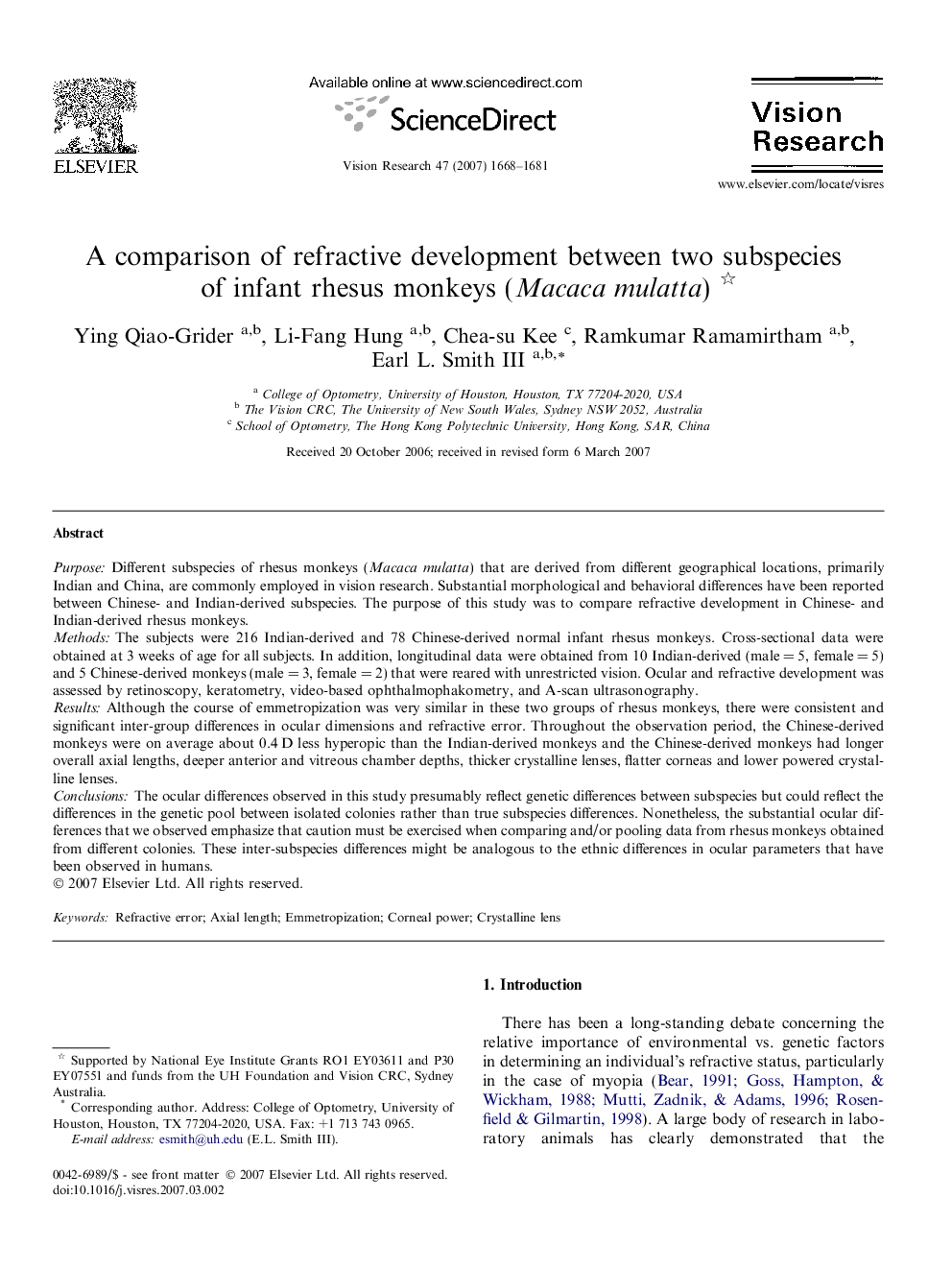| Article ID | Journal | Published Year | Pages | File Type |
|---|---|---|---|---|
| 4035698 | Vision Research | 2007 | 14 Pages |
PurposeDifferent subspecies of rhesus monkeys (Macaca mulatta) that are derived from different geographical locations, primarily Indian and China, are commonly employed in vision research. Substantial morphological and behavioral differences have been reported between Chinese- and Indian-derived subspecies. The purpose of this study was to compare refractive development in Chinese- and Indian-derived rhesus monkeys.MethodsThe subjects were 216 Indian-derived and 78 Chinese-derived normal infant rhesus monkeys. Cross-sectional data were obtained at 3 weeks of age for all subjects. In addition, longitudinal data were obtained from 10 Indian-derived (male = 5, female = 5) and 5 Chinese-derived monkeys (male = 3, female = 2) that were reared with unrestricted vision. Ocular and refractive development was assessed by retinoscopy, keratometry, video-based ophthalmophakometry, and A-scan ultrasonography.ResultsAlthough the course of emmetropization was very similar in these two groups of rhesus monkeys, there were consistent and significant inter-group differences in ocular dimensions and refractive error. Throughout the observation period, the Chinese-derived monkeys were on average about 0.4 D less hyperopic than the Indian-derived monkeys and the Chinese-derived monkeys had longer overall axial lengths, deeper anterior and vitreous chamber depths, thicker crystalline lenses, flatter corneas and lower powered crystalline lenses.ConclusionsThe ocular differences observed in this study presumably reflect genetic differences between subspecies but could reflect the differences in the genetic pool between isolated colonies rather than true subspecies differences. Nonetheless, the substantial ocular differences that we observed emphasize that caution must be exercised when comparing and/or pooling data from rhesus monkeys obtained from different colonies. These inter-subspecies differences might be analogous to the ethnic differences in ocular parameters that have been observed in humans.
